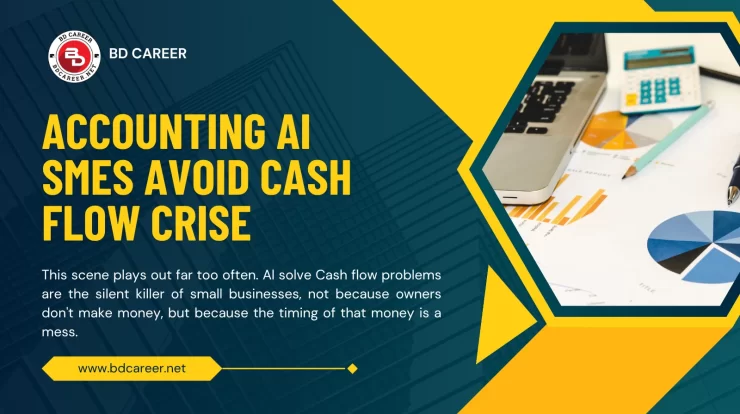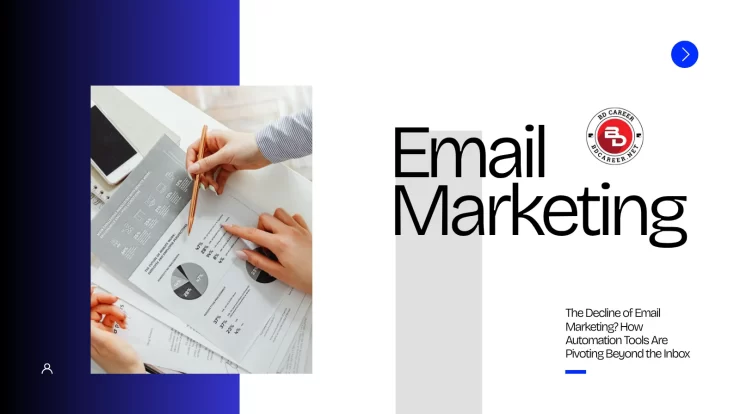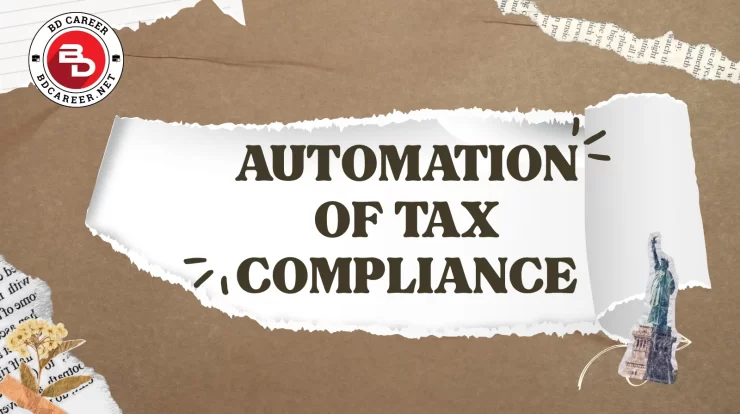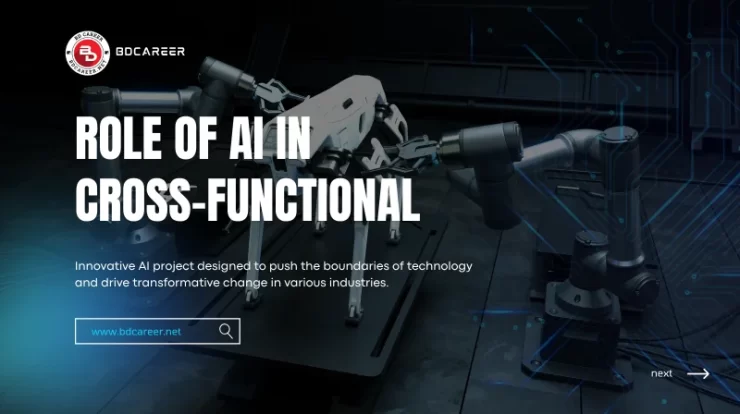
It’s 11:47 p.m. on a Thursday night. A small business owner, maybe running a bakery, maybe a design studio, is sitting at the kitchen table surrounded by invoices, receipts, and a half-empty mug of coffee. The numbers don’t look bad at first glance, but something feels off. Sales are up. Clients are happy. And yet the bank balance is shrinking.
This scene plays out far too often. Al solve Cash flow problems are the silent killer of small businesses, not because owners don’t make money, but because the timing of that money is a mess. Payments come in late, bills arrive early, and payroll doesn’t wait. It’s a cruel kind of math.
But lately, something new is happening. Artificial intelligence — the same tech that recommends movies or predicts traffic jams — is now predicting cash flow crashes before they happen. Tools that once belonged only to corporate finance teams are trickling down to small business owners, giving them a kind of financial foresight. They’ve never had it before.
We’re not talking about robots doing the books. We’re talking about AI that reads between the numbers, spotting trouble weeks or even months ahead.
Contents
Understanding Cash Flow Chaos
Let’s call it what it is: cash flow chaos is the gap between optimism and reality. It’s the space between an invoice sent and a payment received.
For small businesses, cash flow crises aren’t just about running out of money — they’re about uncertainty. You can’t plan marketing. You can’t hire. Sometimes, you can’t even pay yourself. A study by Intuit found that 61% of small businesses struggle with cash flow every year. That’s a majority constantly dancing on the edge.
Traditionally, owners relied on a mix of instinct, spreadsheets, and late-night number crunching to stay ahead. Some used Excel formulas; others just “knew” when to tighten spending. It was manual, reactive, and exhausting.
But business today moves faster than gut instinct. Supply chains are unpredictable. Consumer behaviour changes overnight. A single delayed payment from a client can ripple through your entire operation.

The Rise of Predictive Analytics in Accounting
So what exactly is predictive analytics? In simple terms, it’s when AI looks at past and present data to make informed guesses about the future. Think of it like weather forecasting, but for your finances.
Modern accounting platforms are quietly becoming prediction engines. Tools like QuickBooks Advanced, Xero’s AI features, or apps like Float and Fathom now include forecasting dashboards powered by machine learning. These tools don’t just show what’s happening; they tell you what’s about to happen.
Behind the scenes, algorithms analyse every bit of financial behaviour:
- When do your invoices usually get paid?
- Which months’ sales dip or spike?
- How do your expenses trend around specific seasons?
- Even though your clients’ payment habits change over time.
By crunching thousands of these small data points, AI can predict when cash shortages are likely to occur — often long before they’re visible on a balance sheet.
For the first time, small business owners can make decisions not just on what was, but on what will be.
How AI Predicts and Prevents Cash Flow Crises
AI in accounting doesn’t just track your money; it interprets its behaviour. Here’s how it helps prevent crises:
1. Smart Forecasting
Instead of static spreadsheets, AI-powered tools automatically generate rolling forecasts. They project weeks or months ahead, adjusting in real time as new data comes in. So, when sales slow down or a major expense hits, your forecast updates instantly.
It’s like having a financial weather radar — you see storms before they arrive.
2. Payment Behaviour Tracking
Late payments are one of the biggest killers of cash flow. Predictive systems can flag habitual late payers, letting you tweak payment terms or chase invoices early. Over time, the AI even learns patterns: “Client A always pays three days late after the 20th.”
You stop being surprised. You start being prepared.

3. Scenario Planning
Ever wonder, “What happens if sales drop 15% next quarter?” AI can simulate that — instantly. It runs what-if scenarios that used to take hours or days to calculate manually. This helps owners stress-test decisions, like hiring new staff or upgrading equipment, against possible cash flow impacts.
4. Automated Alerts
Many platforms now send real-time alerts when forecasts predict upcoming shortfalls. These aren’t vague warnings — they’re specific, data-backed messages like “Expected balance may fall below payroll levels in 21 days.”
It’s the kind of proactive nudge that can save a business.
Let’s put this in real terms.
A London-based bakery noticed through its AI dashboard that its supplier payments were overlapping awkwardly with its slowest sales week. The system flagged a potential shortfall three weeks ahead. They renegotiated payment dates with the supplier, smoothed the cash curve, and avoided dipping into credit.
That’s the magic of predictive analytics: prevention instead of panic.
The Human Side of Accounting AI
Now, here’s the truth — AI doesn’t replace accountants or business owners. It augments them.
No algorithm can understand the emotional side of running a small business — the weight of paying salaries, the pride in seeing growth, or the stress when margins tighten. What AI does is remove the fog. It gives clarity, context, and calm.
Owners report feeling less anxious, more confident, and better able to make quick decisions. Instead of obsessing over numbers, they focus on strategy, creativity, or customer relationships — the parts of business that actually need a human touch. One small retail owner I spoke with described it perfectly:
“Before using AI forecasting, I was always guessing. Now I know what’s coming — I can breathe. It’s like going from flying blind to having radar.”
Challenges and Limitations
Of course, it’s not all smooth sailing. Predictive analytics isn’t magic — it’s math, and math needs good data. Many small businesses still struggle with messy bookkeeping. If your data is incomplete, inconsistent, or outdated, the forecasts won’t be reliable. Garbage in, garbage out.
Then there’s the learning curve. Some AI tools can feel intimidating at first, especially for non-tech-savvy owners. And while costs have come down dramatically, premium features still carry subscription fees.
Finally, there’s the human risk: overreliance. AI can highlight trends, but it doesn’t understand context — like a sudden market shift, a pandemic, or a change in customer sentiment. Humans still need to interpret and adjust those insights.
The best results come when humans and AI work in tandem — data plus intuition, prediction plus experience.

The Future: From Forecasting to Financial Autonomy
The next wave of accounting AI will go beyond just predicting problems — it’ll start solving them automatically.
Imagine your system not only warning you about an upcoming shortfall but also recommending specific actions:
- “Delay this non-urgent expense by two weeks.”
- “Send early payment reminders to clients X and Y.”
- “Shift surplus cash into a short-term investment account.”
We’re already seeing prototypes of these autonomous finance systems emerging. Some fintech startups are building tools that act like digital CFOs, continuously optimising financial decisions based on predictive data.
And as AI models become more accessible, even microbusinesses — freelancers, small shops, family businesses — will gain this predictive power. What was once a high-end corporate luxury will soon be standard in every accounting toolkit.
Conclusion
Let’s go back to that late-night business owner. Same kitchen table. Same pile of invoices. Only now, there’s a dashboard glowing on the laptop, a predictive analytics tool showing next month’s forecast, cash inflows, and potential risks highlighted in orange.
That’s the quiet revolution happening, and AI helps in small business finance right now. Predictive analytics isn’t just about numbers — it’s about peace of mind, about knowing that the lights will stay on, that the next payroll is safe, that your business can keep moving forward.
For decades, small business owners have operated on intuition and resilience. Now, they have foresight too. Because in today’s world, seeing tomorrow’s trouble today isn’t a luxury — it’s survival.





